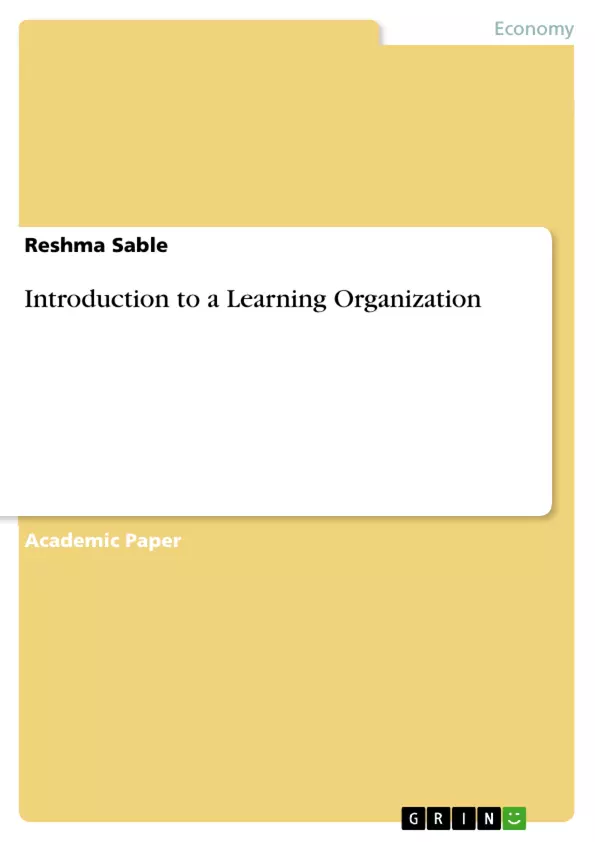If we want to make an attempt to apply the learning principle to the organizations existing in 21st century, then we will have to accept the fact that organization should be treated as a living entity who struggle and strive to survive in changing environment. This organizational ability to learn quickly through its own experience is treated as a key to gain competitive advantage over others.
Gaining competitive advantage through learning will become easy when the organization is aware of its own learning capabilities and the mistakes, if any; committed by it in the past and the clear-cut goals set for the future. Unless and until the organization is capable of identifying the gap with the realizations of mistakes that hinders it from achieving the desired future goal; it won’t be able to get success in future.
Inhaltsverzeichnis (Table of Contents)
- 1.1 INTRODUCTION TO LEARNING
- 1.1.1 Concept of Learning
- 1.1.2 21st Century Learning
- 1.1.3 Need for Learning
- 1.2 CONTRIBUTION TO LEARNING ORGANIZATION
- 1.3 THEROTICAL FRAMEWORK OF LEARNING ORGANIZATION
- 1.4 MODELS OF LEARNING ORGANIATION
- 1.5 LINKAGES TO LEARNING ORGANIZATION
- 1.6 CHALLENGES TO BUILD A LEARNING ORGANIZATION
- 1.7 CREATING A LEARNING ORGANIZATION
- 1.8 SUMMARY
- 1.9 REFERENCES
Zielsetzung und Themenschwerpunkte (Objectives and Key Themes)
This book aims to provide a comprehensive introduction to the concept of learning organizations, exploring the theoretical framework, models, challenges, and strategies for creating a learning environment within an organization.
- The importance of learning in a dynamic and competitive environment
- The concept of organizational learning and its impact on competitive advantage
- The theoretical frameworks and models that underpin learning organizations
- The challenges and strategies for building a learning organization
- The significance of creating a positive learning environment within an organization
Zusammenfassung der Kapitel (Chapter Summaries)
Chapter 1.1 introduces the concept of learning, discussing its role in adaptation, survival, and the transition from 'Survival of the Fittest' to 'Survival of the Learned.' This chapter delves into the significance of learning in a 21st-century context, highlighting the importance of continuous learning and development for organizations and individuals.
Chapter 1.2 examines the contribution of a learning organization to organizational effectiveness and success. It explores how learning fosters adaptation, innovation, and problem-solving, ultimately contributing to competitive advantage.
Schlüsselwörter (Keywords)
The book focuses on key concepts such as learning organizations, organizational learning, competitive advantage, 21st-century learning, self-regulation, and the theoretical frameworks and models that underpin these concepts.
- Arbeit zitieren
- Reshma Sable (Autor:in), 2022, Introduction to a Learning Organization, München, GRIN Verlag, https://www.hausarbeiten.de/document/1275259


